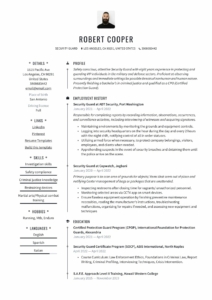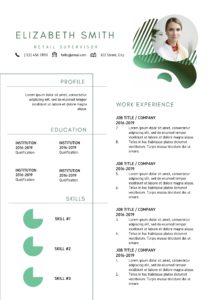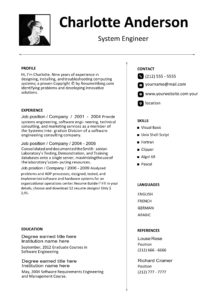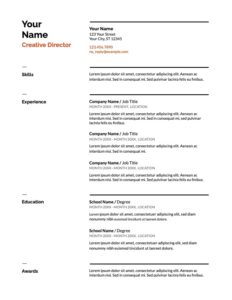The art of salary negotiation is no simple feat. Gone are the golden days where offers of employment resulted in the immediate popping of champagne and victory dances. A critical facet of negotiation success revolves around figures: current earnings and expectations versus the salary and benefits offering from your new employment company.
Job offers often go haywire due to candidates omitting valuable information regarding their compensation structure during the application and interview process. More often than not, most candidates are entirely oblivious regarding the components included in their salary packages.
Perhaps the most vital concept of salary negotiation is timing: Negotiation starts at the application process and not after the fact upon presentation of the offer letter.
Repeat after me: Salary negotiation should happen before and during the application, screening and interview events NOT after the offer lands in your Inbox.
SALARY NEGOTIATION HIDES IN THE DETAILS

Hindsight provides 20/20 vision they say and believe me it reigns true in post-deal dissections I have with candidates in utter despair,
after receiving employment offers less than their current earnings, or well below their compensation expectations.
Candidates often then resort to passing the blame onto the employment company or third-party recruiter facilitating the deal, when in fact they should look at their own actions of either non-disclosure or ignorance when imparting salary information to a hiring manager.
Full disclosure is crucial, regarding your current salary, as well as your package expectations.
GETTING TO KNOW YOUR NUMBERS
There is a significant degree of variation in the structure of salary slips from one company to the next. Total Compensation, Gross Salary, Net Package, Company Benefits! Are you puzzled right now? Do you know what you are earning?
Crunching your salary numbers may seem like the most boring activity but believe me, it is instrumental in the process of salary negotiation, whether you are applying for a new job elsewhere or requesting a raise at your current organization.
THREE STEPS TO A SENSING SALARY STRUCTURE
Step 1: READ what is on your salary slip and employment contract
- What is your Total Compensation Amount?
- Do you have benefits (health, medical, dental, social security)?
- Are you on a 401k plan?
- What is your holiday pay rate?
- Do you get reimbursed for overtime?
- Are you on a monthly, weekly or hourly pay period?
- What is your gross pay figure?
- What is your tax rate?
- Do you have any deductions?
- What is the net number received in your bank account?
STEP 2: DETERMINE hidden Quantifiable Earnings
- Do you receive any benefits not indicated on your salary slip like accommodation allowances, free internet, staff discounts, free meals or entertainment allowances?
- Does the company reimburse you for gasoline, travel expenses or provide you with a vehicle or any smart devices at no cost?
STEP 3: ANALYZE the values of once-off, per annum and variable earnings
- Did you receive an initial sign-on bonus?
- How often you get bonus pay-outs for performance?
- How often do you receive a compensation increase?
- Are you on a targeted compensation structure where your earnings increase or decrease in accordance with specific outcomes achieved?
- Are you part of a share or equity scheme program with shares or stock allocations?
- Do you accumulate any retention bonuses?
DERIVING EXPECTATIONS
Once you are aware of the complex components forming part of your total compensation package, deriving expectations becomes a lot less complicated and the negotiation journey much more straightforward to navigate.
Answering the ‘’What do I want?’’ question when calculating expectations should precede with “What is the market-related package for the job I am applying for?”, and also, “What is the average salary increase percentage for the area I am going to?”.
Unfortunately, most job seekers have unrealistic perceptions of standard increases provided by their specific industry, resulting in unreasonable expectations of 20%-40% above their current earnings, when changing jobs. The average pay raise in the USA during the last 12 months was just below 3% according to the international management consulting company, Aon Hewitt.
(Say what now?) Yes, deal with it.
Conduct adequate research about market-related packages for your industry, qualifications, and level of experience from credible sources like Glassdoor or PayScale. Please remember: friends, family and the barman do not count as reputable information providers.
MOTIVATIONS FOR MOVING

Moving for money as your primary motivation is never a wise choice. You should consider other factors like a challenge, advancement, location, people, and job security as well. These factors are influential to your climb up the career ladder, not just the estimated bucks in your bank account.
Everyone has a price, right? Make sure that ‘’your price’’ is realistic and according to market standards, otherwise, the company may just opt to ‘’buy’’ the services of a cheaper candidate.
Do adequate research about market-related packages for your industry, qualifications, and level of experience from credible sources. In addition: friends, family and the barman do not count as reputable information providers.
Now, choose your expectation number and stick to it.
THREE GUERDON GREMLINS TO GRASP (do not scroll past)
GREMLIN 1: Be aware that your Net Salary and your Net Gain figure may not be the same amount.
• The Nett Gain figure refers to all the quantifiable monetary benefits you are receiving which constitute a saving of expenses you would have otherwise paid from your Net Salary.
GREMLIN 2: Consider the type of compensation package you currently have and the variance in benefit offerings between your current package and those of the new company.
- “Benefit Light” structure includes only one or two benefits like a limited health plan or group life insurance.
- A “Benefit Heavy” format, consists of multiple benefits including a 401k, social security, dental plan, and private medical insurance schemes.
- The most significant impact between these two is the Net Value paid into your bank account.
- With a similar or even higher Total Compensation, a “Benefit Heavy” package may result in a lesser Net Salary than a “Benefit Light” structure.
GREMLIN 3: Provide them with more than just the salary slip
- Your bonuses, once off or variable earnings may not reflect on the particular salary slip you are submitting
- Make sure you include the details regarding these additional funds you receive.
AFTER THE FACT – THREE WAYS TO REACT
Following the proactive route of “upfront negotiation” works in most instances to ensure the magic number in your head reciprocates on the offer letter you receive. However, with most things in life, there is no guarantee. So, what if the package presented results in heart palpitations (of the detrimental kind) or you want to crawl beneath the nearest desk in disdain?
REACTION 1: Motivate, do not agitate
- Politely inquire whether your expectation number can be reconsidered due to X, Y, Z reasons as per your resume.
- You must adequately motivate why you believe the number you are asking for, is indeed a valid request.
- If the answer is yes, pat yourself on the back and vow to work like crazy to prove your worth and value to your new employer.
REACTION 2: Renegotiate, do not horse trade
- Request a number slightly lower 3%-5% than your initial expectation figure.
- If the answer is yes, well done to you.
- Now commit to skip that daily cappuccino, take lunch to work and spend less on your credit card. You will make up the difference in no time.
REACTION 3: Compromise do not agonize
- Ask whether the salary on offer, could be revisited in 6 – 8 months’ time to the figure you have proposed, should you achieve specific deliverables.
- If the answer is yes, you have just mastered the art of salary negotiation
- Make sure to get you get everything in writing, including the deliverables in question.
THE FORK IN THE ROAD
If the answer is still a firm ‘’no’’ after the above, you are facing the all familiar fork in the road, and you have two options:
OPTION 1: You may choose to return to the drawing board, re-evaluate your expectations and decide whether you should stay in your current role a bit longer.
OPTION 2: Take the plunge and embark on this exciting new opportunity. Passion breeds prosperity, and if you love what you do, money will follow suit.
Now, go print out that salary slip and find your current contract of employment in the archives. Your salary negotiation journey as just kicked into 1st gear. Make it count!




